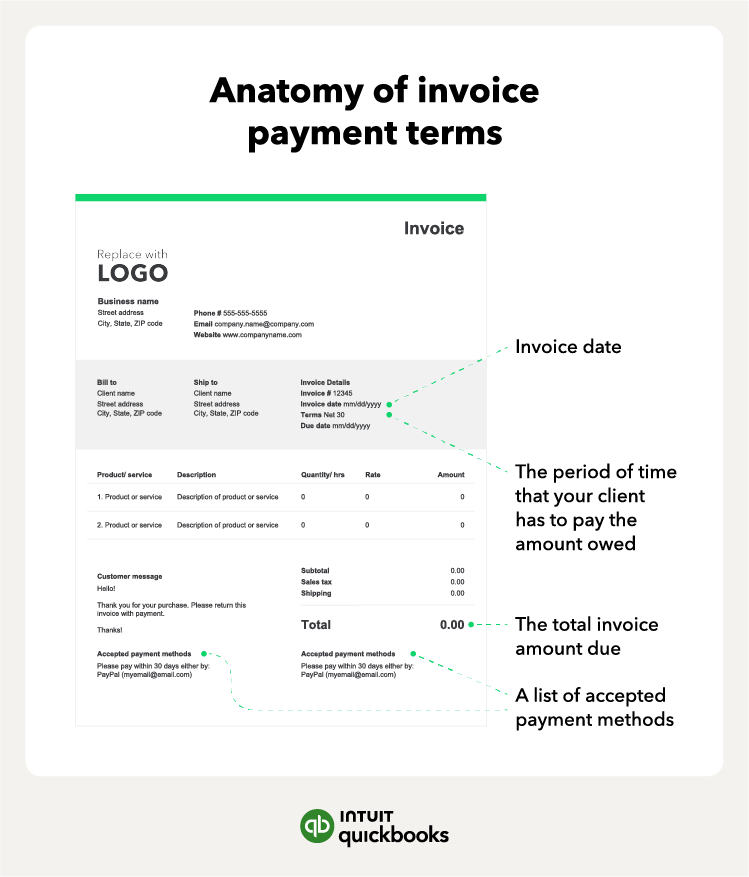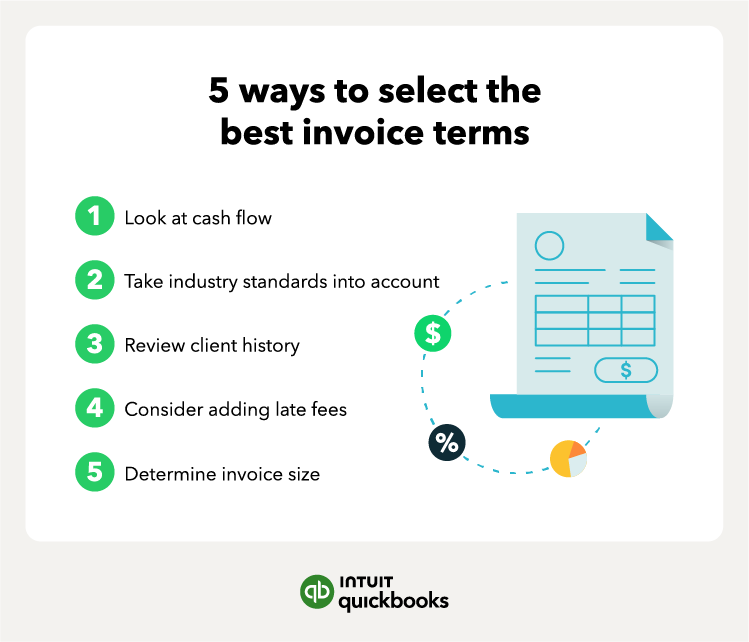Types of payment terms
Setting up an invoicing process with detailed payment terms is an essential part of business accounting. Payment terms make your payments a priority and set expectations for your customers, making client relationships feel more professional and productive. Once you have the payment terms nailed down, the next step is to think about how you could accept these different payment types, like partial payments or advanced payments.
Prepayment
Advance billing can improve your cash flow and reduce the risk of losing money. For example, an event photography business may want to avoid the risk of cancellation by requiring full payment before the event takes place. Prepayment can be a major benefit for businesses—some companies even sweeten the deal by offering discounts to customers who do pay in full upfront.
Partial payment
You may choose to require a partial payment of the total cost of a customer’s purchase. Often this can provide the working capital you may need to complete a customer’s project or benefit your business as well, in the form of increased sales and higher order value. They may also benefit your customers by breaking up their costs into smaller, more manageable chunks.
Installment agreements
You can also accept installment payments. Some companies base installment agreements on time—every three months, for example—or upon the completion of certain project milestones. You may choose to divide the customer’s total cost into a series of smaller monthly payments. Services like Afterpay now make this feasible for vendors where customers can buy something and pay it off over several months.
Lines of credit
A line of credit offers buyers financing toward products and services; customers can then repay the balance on the agreed payment schedule. Offering a line of credit through your business can, however, come with some risk as the customer could default. While this option is typically more commonly used by larger organizations, small businesses can also use them.
Immediate payment
Immediate payment refers to a transaction for which payment is due upon receipt, or as soon as the goods or services are delivered. Some may add into the contract that you have the right to repossess goods if the customer does not provide immediate payment. However, immediate payment may not always be feasible or practical for certain types of businesses or transactions.
Net 7, 10, 15, 30, 60, or 90
These terms refer to the number of days in which a payment is due. For instance, net 30 means that a buyer must settle their account within 30 days of the date listed on the invoice.
Choosing net payment terms may inconvenience you as a business owner, as you'll have finished the project or delivered the product without receiving income. However, customers may prefer these terms. Try to find a period that works for both you and your client.
Subscriptions and retainers
Subscription and retainer payment terms require customers to pay regularly, such as monthly or annually. Typically, businesses on retainer agreements issue invoices to clients on a recurring basis. Automating invoicing for recurring payments can help in these situations.




.gif)